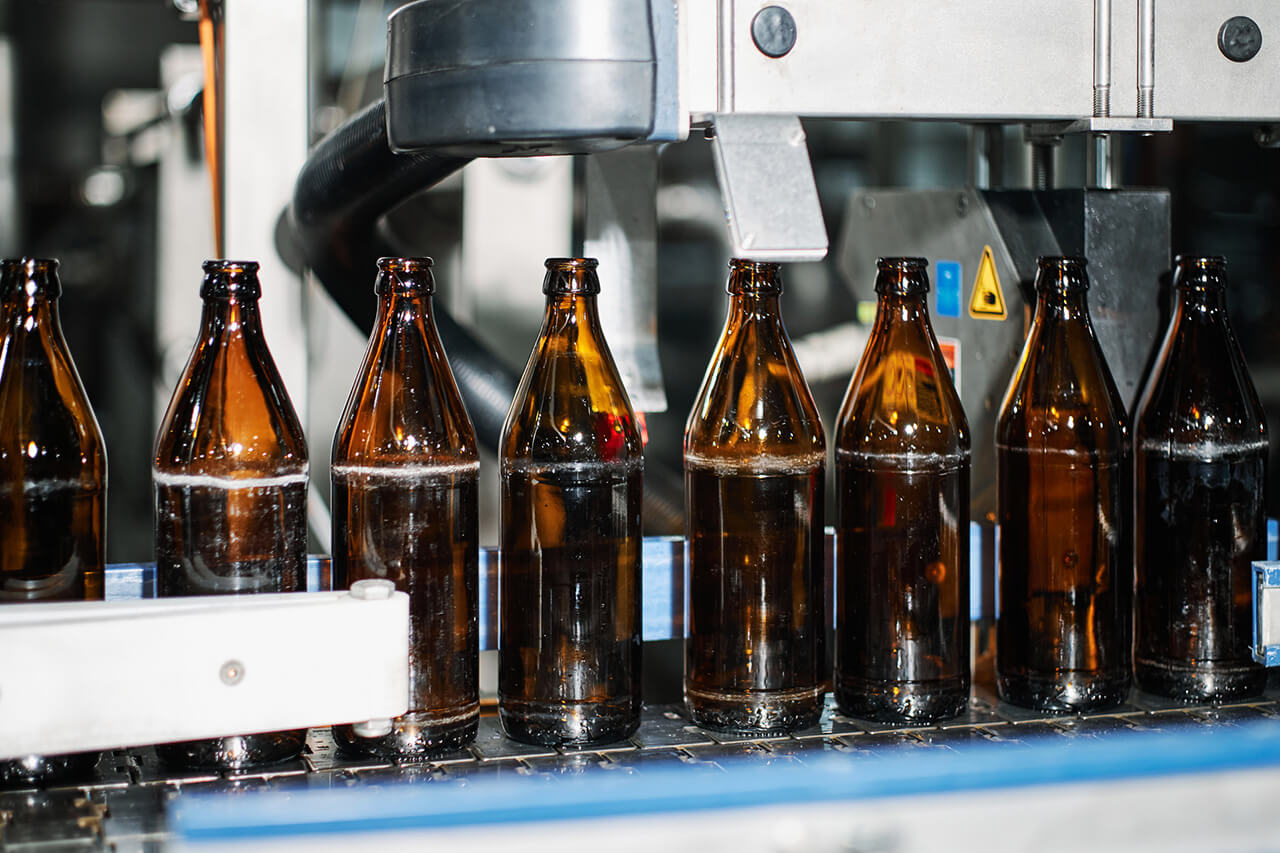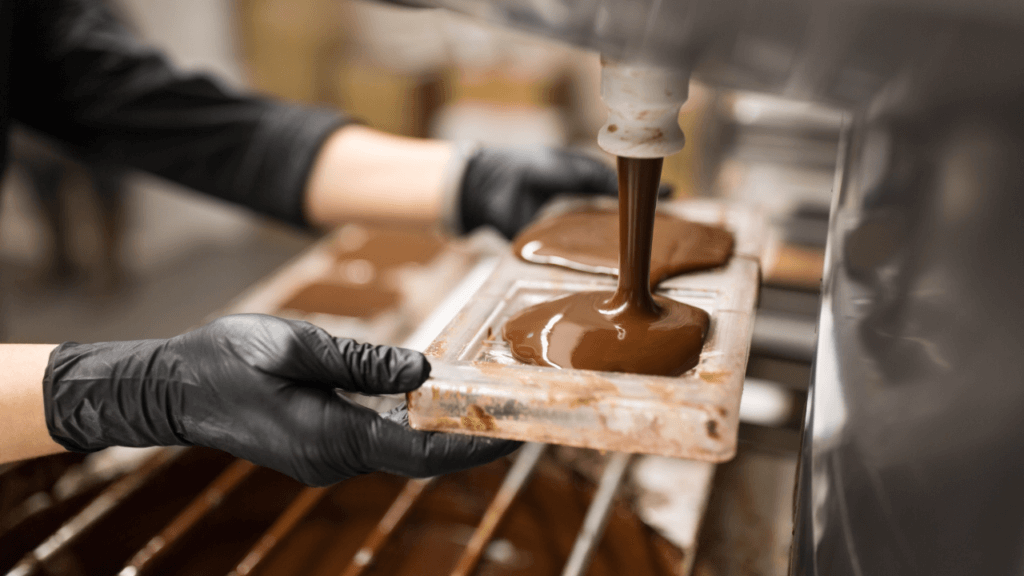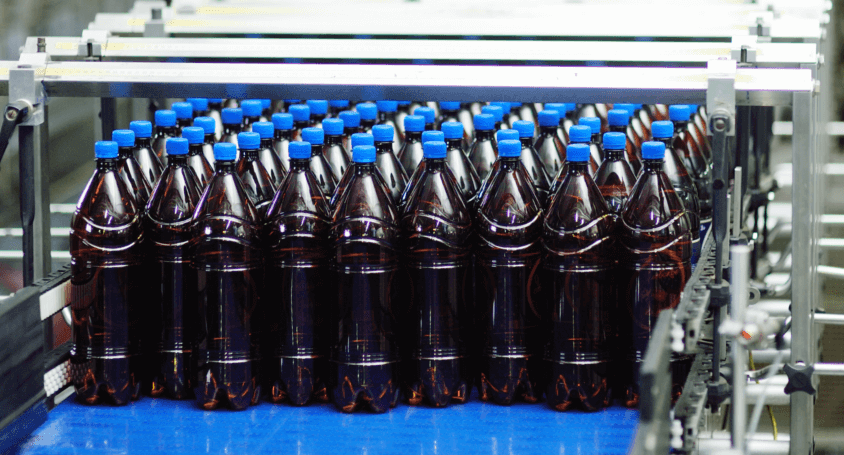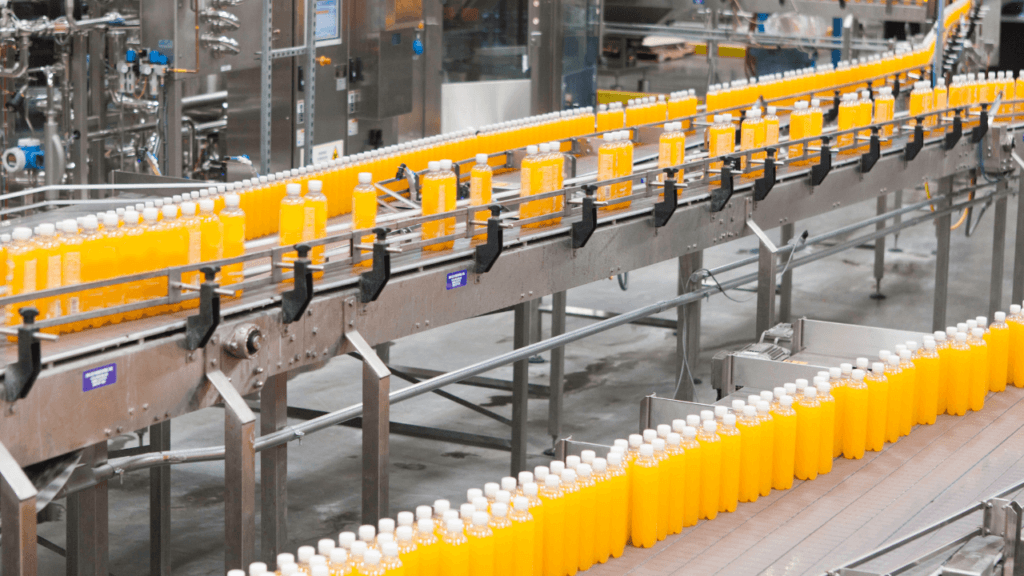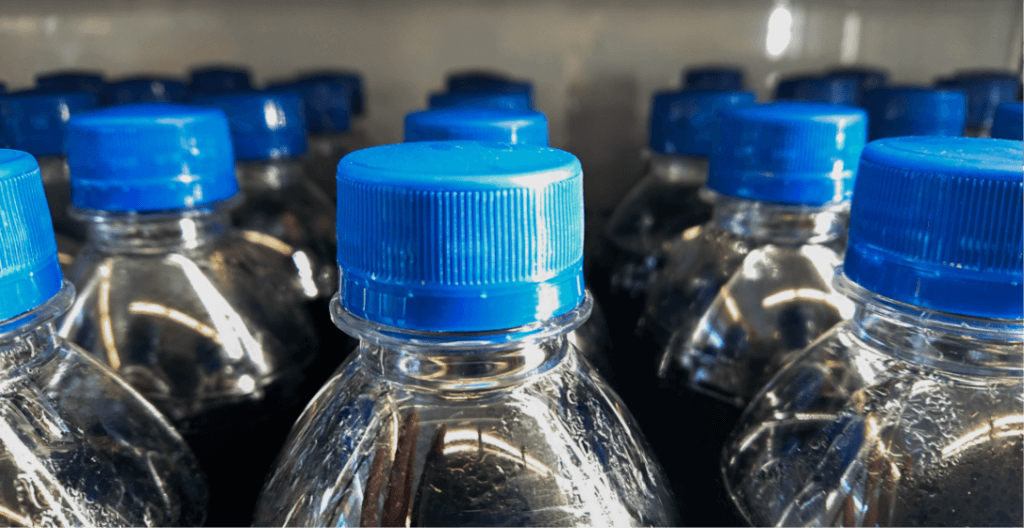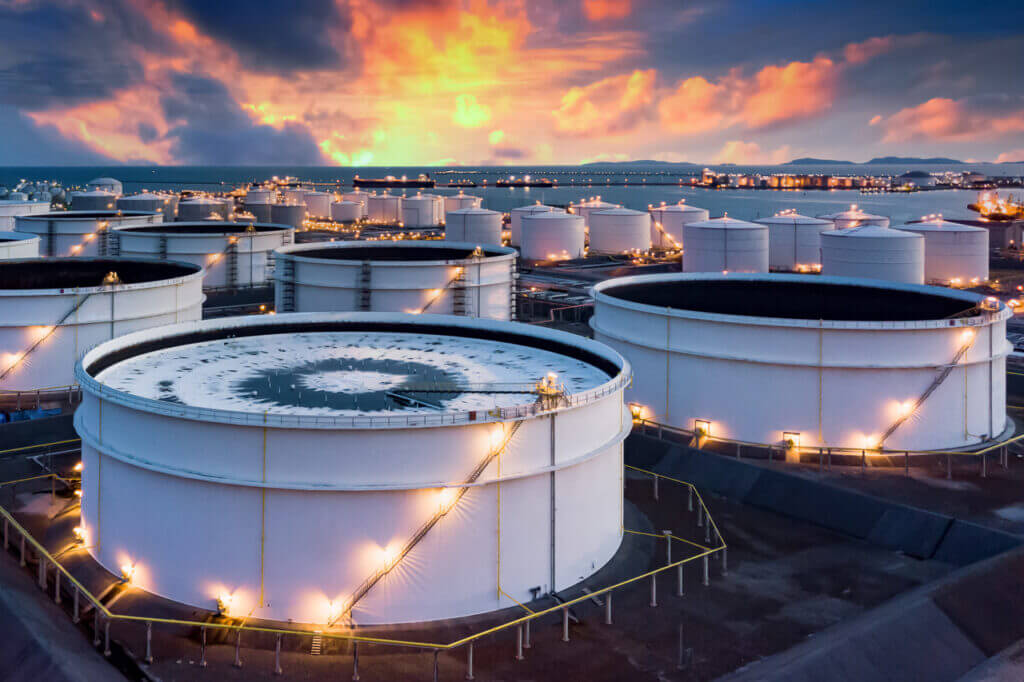This article is from issue Number 4, 2020, of a journal dedicated to the applied and practical science of the brewing industry published by the Master Brewers Association of the Americas, a non-profit professional scientific organization dedicated to advancing, supporting, and encouraging advances in the brewing of malt beverages and related industries.
This file is posted with the authorization and permission of the Master Brewers Technical Quarterly Editorial Board.
Through the efforts of Master Brewers membership and authors, like those associated with this article, Master Brewers leverages the collective resources of the entire brewing community to continually improve the processes and products of our membership.
For more information on this and other topics related to the brewing industry,
we invite you to visit Master Brewers at mbaa.com
SUPPLIER PERSPECTIVE
A Sustainable Approach to Brewery Wastewater
Orianna Bretschger
Aquacycl, Escondido, CA 92029, U.S.A.
Orianna Bretschger is the CEO and Co-founder of Aquacycl, a wastewater
technology company commercializing modular, plug-and-play systems for industrial wastewater based on microbial fuel cell technology. A native of the southwestern United States, she grew up appreciating water issues. She received a Ph.D. at the University of Southern California, where she studied how microbes remove pollutants from water and produce electricity at the same time. In 2016, she founded Aquacycl with her partners after 8 years of R&D into distributed wastewater treatment. Her research has resulted in 32 journal publications, three book chapters, and eight patent filings.
E-mail: obretschger@aquacycl.com
https://doi.org/10.1094/TQ-57-4-1207-01
© 2020 Master Brewers Association of the Americas
ABSTRACT
Wastewater management is never a primary consideration to breweries that are just getting started. However, as they grow, it can become a limiting factor. With the explosive growth of the brewing industry over the past decade, utilities are challenged to treat the high-strength wastewater and are limiting discharge levels or increasing rates. New microbial fuel cell (MFC) technology provides an option for onsite treatment of the ultra-high-strength (and most costly) streams, enabling brewers to meet their permitted levels, even while expanding production. While the technology is not applicable in all cases, brewers should understand how new MFC systems can be used to reduce wastewater management costs.
Whether you are just getting started or rapidly growing, the first step is to understand your wastewater and your options for managing it. Onsite treatment of wastewater has traditionally been cost prohibitive for breweries, but new microbial fuel cell (MFC) technologies offer promise to reduce costs and increase sustainability.
The Challenge of Brewery Wastewater
The brewing industry has almost doubled in the past 5 years, with over 8,275 craft breweries in 2019, up from 4,600 in 2015 (1). This has overwhelmed many small towns’ municipal infra- structure, resulting in limitations placed on brewers or surcharges to discharge to the sewer. This forces brewers to consider disposal or treatment of the highest-strength streams. Other factors for addressing wastewater management include sustainability, cost escalation, and permit risks. Off-grid breweries face even more challenging situations as they have no utility to discharge to.
Understanding Your Wastewater
For every gallon of beer produced, breweries generate between 3 and 10 gallons of wastewater. This wastewater has high concentrations of organic material, which is challenging to treat.
For brewers that are limited by permit levels or facing high surcharges, the first step to reducing the impact is to understand wastewater balance and sources. This includes testing to see what the current biological oxygen demand (BOD), total suspended solids (TSS), and other nutrients are, and where the highest strength sources are coming from.
The most important concepts to know about brewery wastewater are BOD and TSS. BOD is a measure of the amount of biologically degradable organic content (sugars, etc.) that exists in a wastewater stream. BOD levels will vary depending on a number of factors, including the type of beer, ingredients used, and whether the high-strength streams are separated out. In a typical brewery, BOD will range from 3,000 to 10,000 mg/L, which is up to 30 times higher than residential sewage (2). TSS is a measure of the concentration of solids in the wastewater and is typically less than 3,000 mg/L. Most publicly owned treatment works charge extra (surcharges) for any BOD and TSS over 300 mg/L.
Both of these factors can significantly impact the downstream treatment plant, resulting in unpermitted discharge. High BOD, TSS, and other nutrients will not only impact the treatment facility but also can become a problem to the waterways that they discharge into. If a treatment plant cannot handle the incoming high-strength wastewater, it will discharge partially treated waste- water into the waterway, creating anoxic conditions for the fish or algal blooms. Brewers are important members of the community and need to recognize that sustainable water and wastewater strategies are critical for the environment and a sustainable business.
High-Strength Defined
Utilities consider high-strength to be anything over 300 mg/L BOD, while technology providers consider high-strength to be anything over 1,000 mg/L and ultra- or super-high-strength to be over 10,000 mg/L BOD. In a brewery, the highest-concentration wastewater comes from spent yeast, the trub, waste beer, and the first rinse of the clean-in-place washdown of the equipment. Think of washing dishes: the first rinse will be the dirtiest and contain the highest levels of soluble organic matter, making it the most expensive and difficult part to treat. This volume tends to be just 20% of the total wastewater generated at the brewery, but it still poses a challenge to utilities as they may not be able to accept strong brewery wastewater and still serve residential customers. To put it into context, a brewery producing 5,000 barrels per year discharges the same amount of BOD as about 500 homes (2). Other factors to consider are pH, temperature, nitrogen, and phosphorus, all of which have limits set by the local utility.
A Practical Approach to Evaluating Wastewater Options
The Brewers Association’s Wastewater Management Guidance Manual (2) is an excellent resource that gives information about how to side stream the highest strength streams and re- duce the remaining wastewater BOD to levels that the utility can treat. For side streaming, the most common activities are to separate the process waste from the wastewater. Mash from spent grain can be picked up by farmers for animal feed and can be an additional revenue stream. Other leftover yeast and hops can be brought to a composting facility. Waste beer should be captured in a calamity tank.
Once breweries have implemented side streaming, initially the most cost-effective option is typically to segregate and transport the high-strength streams, but this can get expensive if they face significant growth. There comes a time when the only real option is to consider onsite treatment.
Before installing an onsite treatment system, talk with other brewers that have installed systems or experts in the field. Understand what your requirements are, and understand the differences, challenges, and benefits between various systems. These discussions will help you determine what the best system may be for your operations and financial situation. There is, however, a new treatment option that may be worth considering, described below.
MFC Technologies for High-Strength Wastewater Treatment
MFC technology is based on over 20 years of research and development efforts to produce electricity from wastewater. MFC uses naturally existing electrogenic bacteria that produce direct electricity while “eating” the carbon source. Wastewater from the food and beverage industry is an early use case for MFCs, as it is rich in carbon, providing good food for the bacteria.
How It Works
Until recently, most MFC technologies were not commercially scalable and addressed only a small part of wastewater treatment. Early efforts at commercialization were designed to maximize energy recovery rather than wastewater treatment and contained expensive components that limited the application. Aquacycl, a water technology startup, has developed the first commercially viable MFC for ultra-high-strength wastewater treatment.
The BioElectrochemical Treatment Technology (BETT®) is an anaerobic process of degradation, meaning no oxygen is added, which results in lower energy costs compared with aerobic treatment. The system contains an anode and a cathode in a single chamber. Locally sourced bacteria are selected and enriched to generate biofilms on the anode, and they begin degrading the sludge and soluble organic material contained in the wastewater. As the bacteria break down the carbon-based organic matter in the wastewater, they release electrons during the process of respiration. The bacteria use the conductive surface to breathe, and the system captures the electrons as they are discharged. The anode and cathode are electrically connected to allow the electrons to flow across the circuit at a fixed rate and produce direct current (DC).
Depending on the amount of energy generated, it can be captured for beneficial use (charge a forklift) or allowed to dissipate safely. Since most wastewater treatment is a huge energy-consuming activity, this system will make it energy neutral or generate DC power. By increasing the rate at which electrons are taken away, the treatment rate is significantly increased, taking hours instead of days or weeks. Removing electrons faster has the added benefit of effectively “starving” the microbes so they do not overgrow, meaning that they have minimal sludge production. Sludge removal is only needed one or two times per year and is included as part of the service fee. The low sludge management is critical to the success of the operation of the MFC system.
The bioreactors are the size of a standard car battery and stack together like LEGOs® to increase treatment quality or capacity. This means that as production grows, the treatment can grow. Each reactor in the container is remotely monitored and controlled by Aquacycl in real time, resulting in the earliest indication of any issues and minimizing the need for a full-time onsite operator.
MFCs in Action
An example of a brewery that validated the MFC technology is one of the largest beer companies in the world. They had acquired a micro-brewery and were experiencing increased demand for the new brand. This led to the decision to add production capabilities to their mega-brewery line that produced the recipe from the acquisition. As the new beer had fruit flavors, the high-concentration streams were upsetting their onsite treatment facility. They were trucking the high-strength wastewater for disposal, and it was costing tens of thousands of dollars per month. They worked with Aquacycl to validate treatment of the high-concentration wastewater from the fruit beer, reducing the BOD and TSS to levels that could then be fed into their existing anaerobic digester. This provided enhanced flexibility in terms of production variation, allowing them to make production changes without impacting the downstream treatment.
Another application of MFC technology was a brewer that had to consider wastewater before they even opened. Joshua Tree Brewery was looking to expand their popular beers out of the garage and into a physical taproom. The town of 10,000 is a craft beer desert, with the nearest brewery located over 50 miles away. They were informed that they would require an onsite treatment system to comply with state, county, and local dis- charge requirements, as they had no utility to discharge to.
When they started looking at options to treat their wastewater, standard treatment systems were prohibitively expensive for a small company with small volumes. The treatment requirements came close to shutting down the entire business. Working with Aquacycl, they were able to affordably meet the county’s requirements for discharge, removing 99% of BOD, 85% of TSS, all sulfur, and about one-third of the nitrogen. Sulfur removal uses a biological process to convert all sulfates and sulfites into elemental sulfur. No hydrogen sulfide is generated, which means no odor from the system. Similarly, the microbes directly remove the nitrogen, converting it to ammonium. Aquacycl technology is typically applied as a pretreatment, removing bulk BOD, and depending on customer discharge requirements, will work with partner technologies as a polishing step.
Benefits and Challenges of MFCs
MFCs hold promise for distributed wastewater treatment, but they are not a fit for all brewers. The best application is small volumes of ultra-high-strength streams that cannot be discharged to sewer or treated by conventional systems, or that otherwise are transported off-site. By directly treating the most difficult portion of wastewater, brewers will significantly reduce costs from trucking, surcharges, and the risk of non-permitted discharges.
Here are some other benefits:
- Small footprint—because they are treating a small volume, they occupy a fraction of what a conventional system would require. As most brewers are located in cities, space constraints are a key consideration.
- No capital expenditures—the BETT systems are operated as a service contract, providing guaranteed performance without large installation costs.
- Scalable to meet changing production demands—onsite treatment is capital intensive and typically built for fixed production volume, so fast growth may exceed design capacity, limiting the new production volumes.
- Energy neutral and sustainable—by producing direct electricity without methane generation, they eliminate the need for complicated cogeneration facilities to burn the biogas. Combined with other technologies, they can enable water reuse.
- Cost-effective for rural breweries that are not able to discharge to a sewer
The main challenge of MFC systems is finding the right application where it is cost-effective to implement. They will not be competitive to treat entire brewery wastewater or high volumes of low-strength wastewater. The best application is where breweries are already side streaming the high-strength streams and would like to eliminate transport offsite. The other key consideration is costs to discharge or treat. MFC technologies will not be cost competitive in areas where surcharges are low.
Conclusion
While most brewers do not think about wastewater unless they are forced to, having a good understanding of your options and new technologies can be helpful to growing and new brewers alike. When your brewery gets to the point where you need to change the way you are managing wastewater, start with side streaming the highest strength streams. These can either be treated onsite with MFC systems or trucked offsite. While MFC systems are probably not a fit for all breweries, they have demonstrated significant cost reductions, smaller footprint, a hands-off wastewater treatment, and direct energy recovery, allowing brewers to focus on making beer instead of worrying about wastewater treatment.
REFERENCES
- Brewers Association. 2020. Brewers Association releases annual growth report for 2019. https://www.brewersassociation.org/press-releases/brewers- association-releases-annual-growth-report-for-2019/.
- Brewers Association. 2017. Wastewater Management Guidance Manual. Brewers Association, Boulder, CO. https://s3-us-west-2.amazonaws. com/brewersassoc/wp-content/uploads/2017/05/Wastewater_Management_ Guidance_Manual.pdf.


